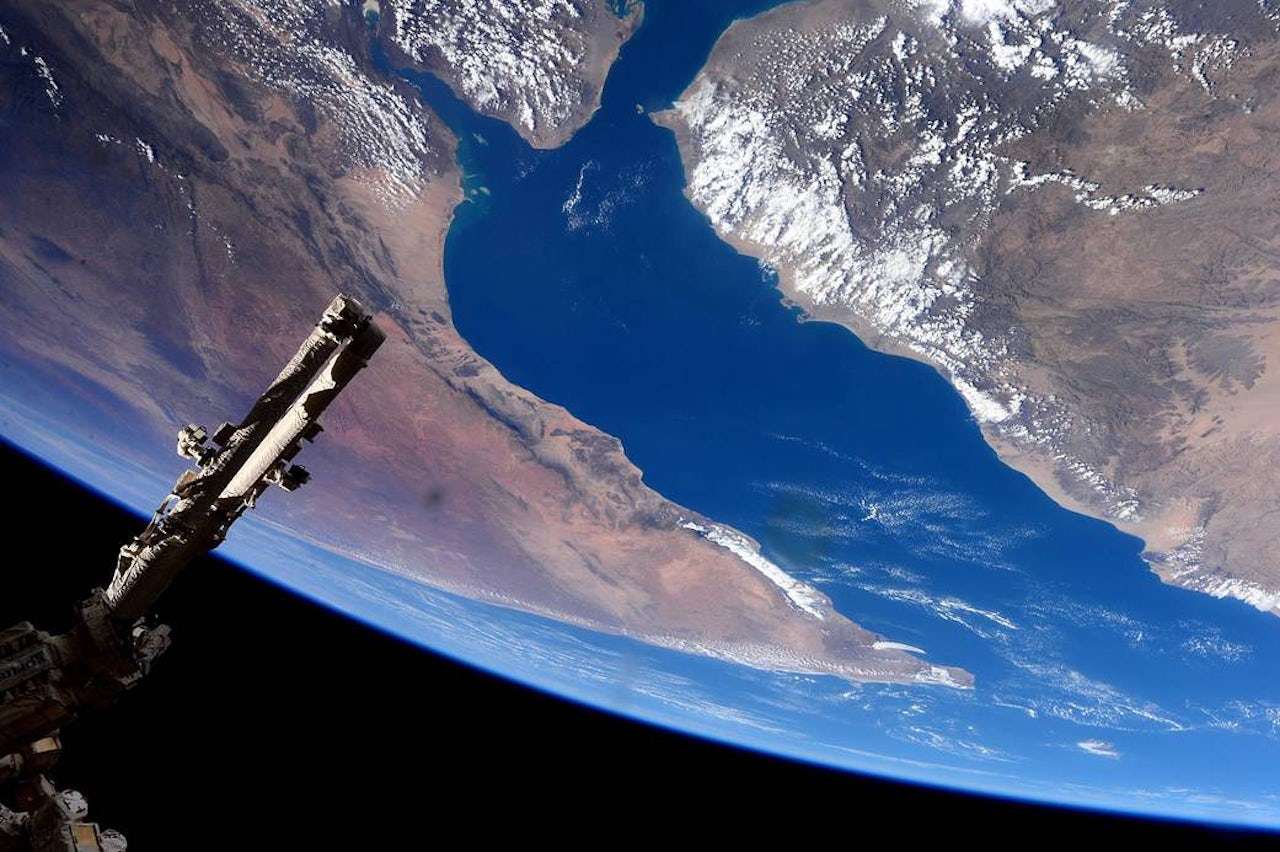The term “Space Guard” sounds a little safer than “Space Force” — which has been Trump’s term of choice since March to advocate for the creation of a new space-dedicated branch of the military. (In the past four months, Trump has provided very little clarification or explanation about the “Space Force,” but he’s repeated his vague intention several times.)
But as reported by Politico, there’s momentum within the government to create a “Space Guard” rather than a “Space Force.” According to the Politico article, a number of senior officials, including Air Force Base instructor Lt. Col. Peter Garretson, a former Trump advisor (who was granted anonymity), Commerce Secretary Wilbur Ross, Coast Guard commander Michael Sinclair, and even newly-appointed NASA head Jim Bridenstine have expressed support for the idea of a Space Guard.
Trump’s vision of a Space Force, which has mentioned frequently but never really never substantiated, is as a new branch of the military that has as much power and authority as the existing military branches: the U.S. Air Force, Army, Navy, Marine Corps, and Coast Guard. But a Space Guard would also be a new branch of the military.
While a “Space Guard” may sound safer than a “Space Force,” they would be almost exactly the same thing. The use of the euphemism reflects a move toward appeasing Trump’s demands—using subtle language games to shift the proposed branch’s mission to something more comparable to the Coast Guard than the Air Force.
Trump draws direct comparisons between the Space Force and the Air Force—a branch of the military that develops and deploys aircrafts that attack and spy on other countries. The Air Force also manages the use of planes and satellites that provide weather and location data, but just $40 billion of the agency’s $156 billion budget is dedicated to these operations.
"We are going to have the Air Force and we are going to have the Space Force: separate but equal, it is going to be something so important," Trump said in June.
Meanwhile, the idea of a “Space Guard” creates a comparison with the U.S. Coast Guard, whose main operations are to conduct search-and-rescue operations, gather ocean data for navigation, and enforce sea laws.
As reported by the Wall Street Journal reported last month, Trump’s approach to creating the “Space Force” is very on-brand: he speaks about it confidently in public, then, he tells his aides and cabinet officials to actually draw up the blueprint. But many experts have spoke out against the idea of a “Space Force,” including Senator Bill Nelson, Defense Secretary Jim Mattis, astronaut Mark Kelly, and former Air Force deputy judge advocate general Charlie Dunlap, just to name a few. Their main critique is that the Air Force already has things under control. Currently, all U.S. military activities in space are managed by the Air Force Space Command, a subsidiary of the U.S. Air Force, which manages the facilities, launches, and use of satellites that keep an eye out for any launches of ballistic missiles, as well as satellites that gather weather and location.
Although creation of a Space Force (or Space Guard, or whatever you want to call it) would require Congressional approval, Trump has repeated his intention to create a Space Force as recently as July 4 (to an audience of veterans during an Independence Day Salute Service). He even directed the Pentagon to double down on researching how exactly a Space Force would actually be created.
Per the Outer Space Treaty of 1967, which the U.S. and dozens of other countries signed, it’s explicitly illegal to launch, store, or use nuclear weapons or weapons of mass destruction in outer space. “The exploration and use of outer space shall be carried out for the benefit and in the interests of all countries and shall be the province of all mankind,” the Treaty reads. “The Moon and other celestial bodies shall be used exclusively for peaceful purposes.”
Major Anna Gunn-Golkin, a member of the Executive Action Group which advises senior leaders of the Air Force, even wrote a plea for The Space Review titled “Space guardians,” outlining a vision where the U.S. is, first and foremost, a peaceful presence in outer space.
“Inspired by the United States Coast Guard, the [Space Guard’s] missions will be: law enforcement, prevention, response, space security operations, traffic management, and defense operations,” Gunn-Golkin wrote. “The Space Guard will be a law enforcement agency, enabling the ‘stable, peaceful environment… for commercial operations’ that the US government envisions.”
The use of military materials in space is more of a reality than we might think here on the ground. On May 23, the Senate Armed Services Committee voted to start creating ballistic interceptors, a type of weapon that could shoot down a missile from above, in outer space. It’s far from Star Wars, but it’s an explicit weaponization of space. The U.S. isn’t alone: according to SputnikNews, Russia is planning to create planes that shoot down satellites orbiting the earth from below. If Trump has his way with creating a sixth, space-dedicated branch of the military, and our best bet at keeping safe peaceful is calling it a “Space Guard” rather than a “Space Force”—well, that’s a very flimsy protective barrier.
